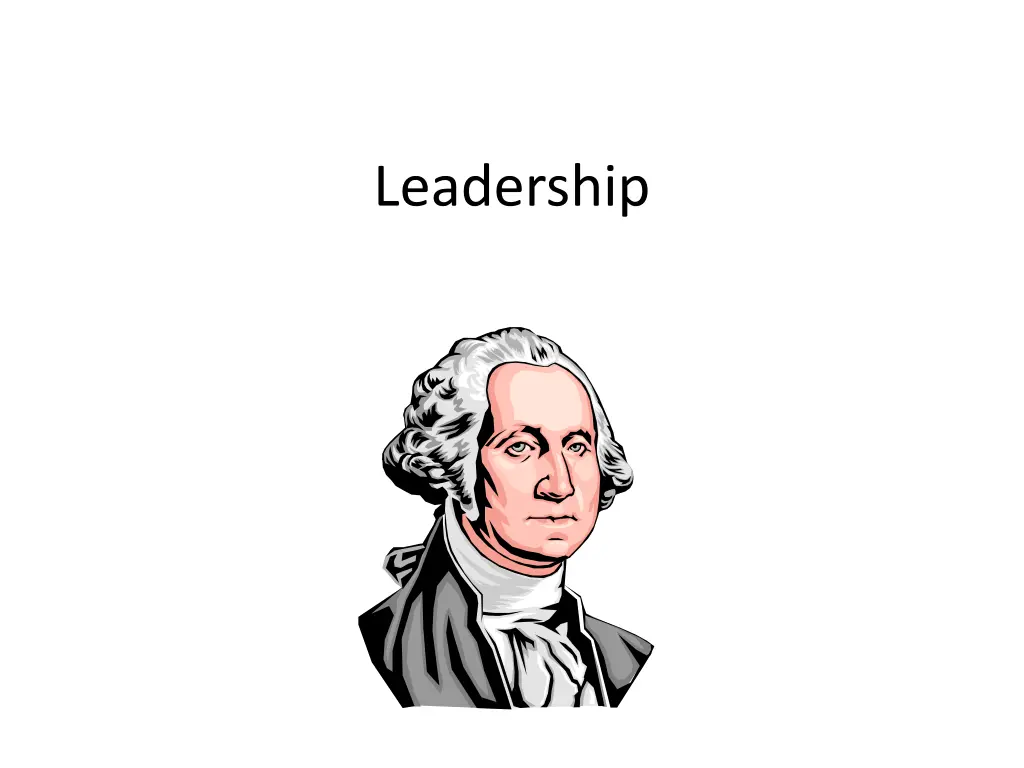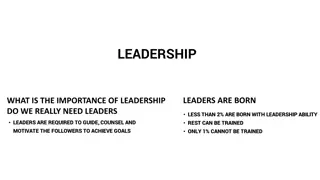
Understanding Autocratic Leadership Styles and Their Advantages and Disadvantages
Explore the definition of autocratic leadership, its primary styles, advantages, disadvantages, and when it is most effective in management. Discover the impact of autocratic leaders on teams and organizations.
Download Presentation

Please find below an Image/Link to download the presentation.
The content on the website is provided AS IS for your information and personal use only. It may not be sold, licensed, or shared on other websites without obtaining consent from the author. If you encounter any issues during the download, it is possible that the publisher has removed the file from their server.
You are allowed to download the files provided on this website for personal or commercial use, subject to the condition that they are used lawfully. All files are the property of their respective owners.
The content on the website is provided AS IS for your information and personal use only. It may not be sold, licensed, or shared on other websites without obtaining consent from the author.
E N D
Presentation Transcript
Lead Definition to go before or with to show the way; conduct or escort to conduct by holding and guiding: e.g. to lead a horse by a rope. to influence or induce; cause: to guide in direction, course, action, opinion, etc.; bring to act as a guide; show the way to go first; be in advance:
Definition of Leadership ability to lead: the ability to guide, direct, or influence people guidance: guidance or direction leaders: a group of leaders
Leadership Qualities Vision Communicate clearly Dedication Magnanimity, giving credit when due Humility Openness Creativity Fairness Assertiveness Sense of humor
Primary Leadership Styles Autocratic Democratic Permissive Collaborative
Autocratic Leader Manager seeks to make as many decisions as possible Manager seeks to have the most authority and control in decision making Manager seeks to retain responsibility rather than utilize complete delegation Consultation with other colleagues in minimal and decision making becomes a solitary process Managers are less concerned with investing their own leadership development, and prefer to simply work on the task at hand.
Advantages of Autocratic Leadership still employed by many leaders across the globe it is intuitive carries instant benefits comes natural to many leaders reduced stress due to increased control more productive group while the leader is watching . Improved logistics of operations. faster decision making
Disadvantages of Autocratic Leadership Short-term approach to management Manager perceived as having poor leadership skills Increased workload for the manager People dislike being ordered around Teams become dependent upon their leader
When Autocratic Leadership is most Effective Short term projects with a highly technical, complex or risky element. Work environments where spans of control are wide and hence the manager has little time to devote to each employee. Industries where employees need to perform low-skilled, monotonous and repetitive tasks and generally have low levels of motivation. Projects where the work performed needs to be completed to exact specifications and/or with a tight deadline. Companies that suffer from a high employee turnover, i.e. where time and resources devoted to leadership development would be largely wasted.
Democratic Leadership Style Democratic leadership is the leadership style that promotes the sharing of responsibility, the exercise of delegation and continual consultation welcomes feedback on the results of initiatives and the work environment encourages others to become leaders
Advantages of Democratic Leadership Positive work environment Successful initiatives Creative thinking Reduction of friction and office politics Reduced employee turnover
Disadvantages of Democratic Leadership Lengthy and boring decision making Danger of pseudo participation No one is responsible
When Democratic Leadership is Effective allow employees to give their ideas on how processes can become leaner and more efficient professional organizations where the emphasis is clearly on training, professional & leadership development and quality of work performed drawing upon the creative energies of all their staff free flow of ideas
Permissive Leadership Style Leader permits subordinates to take part in decision making Gives them a considerable degree of autonomy in completing routine work activities.
Advantages of Permissive Leadership High morale, at first Large input of ideas Employees feel trusted Employees feel energized Employee strengths are used Greater feedback to managers
Disadvantages of Permissive Leadership Decision-making duties can be overwhelming Confused job responsibilities Lower performance Greater employee dissatisfaction Higher employee turnover Customer dissatisfaction
Team Work Cooperative work by group Cooperative effort by a group or team Work produced by group Work produced by a group or team
Teamwork Principles Team viewed as an entity Willing to learn from each other Two-way communication Some autonomy Team members feel valued Initiative is recognized and rewarded Healthy competition among members Engage individual strengths
Positive Teams Observe other members Consider emotions Personal items Maintain perspective (important issues) Communicate (flow, respectful, etc.) Caring, supportive, tolerant, etc Helpful, coaching, mentoring Trust Ethical standards Motivation
Negative Teams Decreased enthusiasm Disagreements Poor and withheld communications Resentment Frustration Anger Distrust Spreading discontent






















